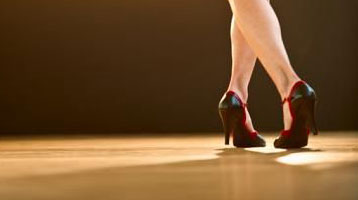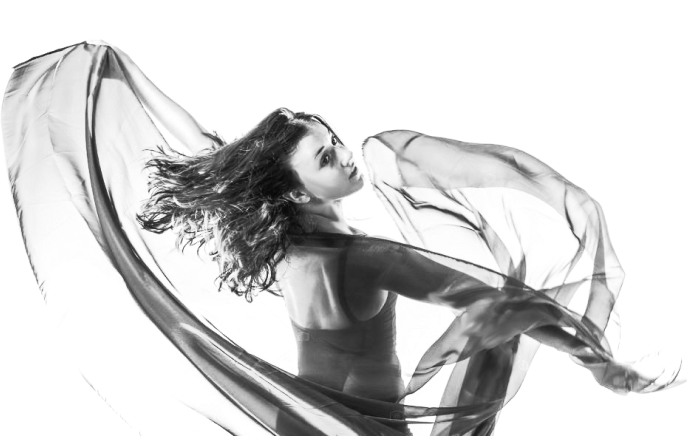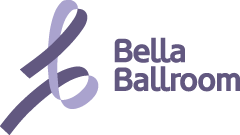
Swing Dance
Charleston
The Charleston is a lively and energetic dance that’s characterized by kick steps and twisting feet. This animated dance is most popular today as a partner style dance that has ties to swing dancing and Lindy Hop.
History of the Charleston:
The Charleston dance became popular in the 1920s, especially with flappers, after it appeared in the Broadway musical “Runnin’ Wild” along with the song “The Charleston” by James P. Johnson in 1923. The origins of the dance are a bit unclear, but it is known that the Charleston was named after the harbor city of Charleston, South Carolina where the dance was developed. The dance can be traced back to the black communities that lived and danced on an island off the coast of Charleston, South Carolina. The communities danced the Charleston as early as 1903, but it wasn’t until 1913 that it evolved into Harlem stage productions and 1923 that the dance became internationally popular.
In 1922, Charleston dancing was brought into the world of show business and was shared with the public at the New Amsterdam Theater in New York. A Ziegfeld Follies production featured the Charleston. The show and the dance were a hit immediately and during the same year a play titled “Liza” introduced the dance again. The stage performances connected the social dance with theater.
Flappers were the dancing women of the 1920s who popularized and characterized the Charleston. These women were known as Flappers because of the way they flapped their arms and walked like birds when dancing. They commonly would wear short dresses and have bobbed hair. Men popularly wore straw hats and raccoon coats during this time. The Charleston grew up to be so valued that some jobs required employees to be competent to dance or teach it in order to get work as waiters and waitresses. Other parts of society viewed the Charleston and the Flappers as scandalous and a moral downfall to humanity. In 1925, Variety Magazine reported that the vibrations of the dancers were so strong, they caused the tenderloin dance hall known as the “Pickwick Club” to collapse killing 50 people in Boston. It was actually banned from many dance halls during the 1920s because it was considered to boisterous and indecent. Some dance halls posted signs reading “PCQ” for “Please Charleston Quietly.”
The Charleston craze reached its height in 1926 and by 1927 newer dances began appearing and becoming more popular. Elements of the Charleston went into the swing dance style known as Lindy Hop and during the 1950s and 1960s the Charleston made a few more surging reappearances since it’s all time high.
Charleston Dancing Today:
The kicking legs and swinging arms continue to characterize the Charleston dance today. It can be danced as a solo, in a group, or with a partner. It is done with big, loose motions in four basic steps with the arms swinging in opposite motion to the legs. Today, the Charleston is a very popular partner dance in the swing and Lindy Hop communities with many fun variations.
The Charleston has appeared on National and International dance competition shows such as, “So You Think You Can Dance” and Britain’s “Strictly Come Dancing.” In 2009, the Charleston became the breakthrough dance for competitors Chris Hollins and Ola Jordan who took the trophy on the seventh season of, “Strictly Come Dancing.” While Hollins wasn’t the strongest dancing celebrity, he won based on personality, which was showcased by the bouncy upbeat nature of the Charleston. The Charleston also appeared in the ninth season of “Dancing with the Stars” as well as in the popular movie, “The Great Gatsby” in 2013.
Charleston dancing was originally styled to fit the ragtime music of the 1920s era and then further developed to fit with the big band music that was popular in the 1930s and 1940s. The music for the Charleston is known as ragtime jazz, which is in a quick 4/4 timing with syncopated rhythms and is still popular with Charleston dancers today. Charleston dancers continue to use the old time basic step where in they step back on their right foot, touch back with their left foot, step forward on their left foot, touch front with their right foot forward and then repeat. Dancers enjoy using variations that include pigeon toeing, high kicks, leg swings, flexed feet, turns and more.
Charleston Dance Music:
- “Sing Sing Sing” Benny Goodman
- “King of Swing” Big Bad Voodoo Daddy
- “Got My Own Thing Now” Squirrel Nut Zippers
- “Take the A Train” Ella Fitzgerald
- “Man with the Hex” Atomic Fireballs
- “Jumpin at the Woodside” Count Basie and Benny Goodman
- “Hey! Hey! Hee! Hee!” Marion Harris
- “Ballin’ the Jack” Sidney Bechet
- “Charleston Medley” Arhur Gibbs and His Gang
- “Charleston” James P. Johnson
- “Broadway Charleston” National Music Lovers Dance
- “Charleston Your Blues Away” Dance! Dance! Dance! Charleston
- “High Hat” Hutch
- “Black Bottom” Howard Lanin
- “Am I Blue?” Ben Selvin & His Orchestra
- “Fascinating Rhythm” Fred & Adele Astaire/George Gershwin
- “I’m Nuts About Screwy Music” Jimmie Lunceford & His Orchestra
- “Let’s Misbehave” Elvis Costello
- “Charleston Crazy” Fletcher Henderson and His Orchestra
- “Charleston Charlie” Marion Haris
- “Give Us the Charleston” Clover Gardens Orchestra
- “Do That Charleston Dinah” Nathan Glantz and his Orchestra
- “Charelston Baby O’ Mine” The Georgians
- “Charleston Rhythm” Manhattan Musicians
- “Muskrat Ramble” Sidney Bechet
- “Shake It and Break It” Sidney Bechet & His New Orleans Feetwarmers
- “That’s My Weakness Now” Whispering Jack Smith
- “I Love My Baby” Elsie Carlisle
- “Let’s Go To Mary’s House” Savoy Orpheans
- “Ain’t She Sweet” Piccadilly Revels Band
- “Dance, Little Lady” Noel Coward
- “Jig Walk” Ben Bernie
- “I Wonder Where My Baby Is…” Ben Selvin
- “Charlestonette” Paul White
- “Charleston Ball” Six Hayseeds
- “I’m Gonna Charleston Back” California Ramblers
- “Doin’ The Raccoon” George Olsen & His Music
- “Good Little, Bad Little You” Cliff Edwards
- “Where’s That Rainbow?” Dorothy Dickson
- “The Girl Friend” Savoy Orpheans
- “I Love My Baby” Elsie Carlisle


